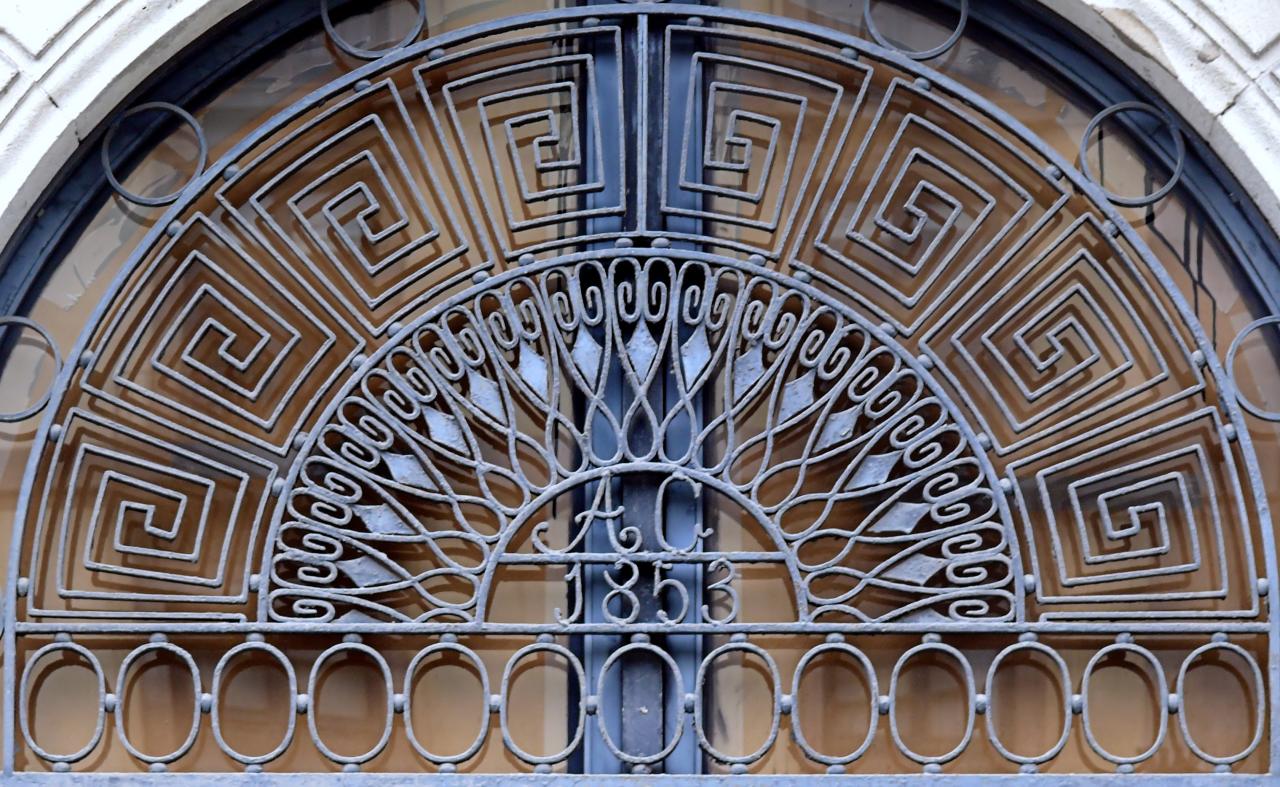#1269. Neoclassical Wrought Iron Façade Decoration: Semicircular Transom from 1863 with Meander Ornament
Before us is an exquisite example of architectural decoration — a semicircular transom above an entrance, dated 1863. This magnificent specimen of wrought metal pattern in neoclassical style combines geometric precision with artistic expressiveness.
The transom composition has a pronounced radial structure. The outer band is decorated with a classic Greek meander (key pattern) made of metal strips creating a strict geometric rhythm. The inner part is adorned with more delicate lace-like design featuring wave-like elements reminiscent of stylized floral motifs. At the center of the composition are the initials "A.C." and the date "1863," indicating the time of creation and, possibly, the building's owner.
The lower part of the transom is adorned with a simple repeating oval ornament that balances the complex upper section. The contrast between the laconic beige background of the wall and the dark metalwork emphasizes the filigree craftsmanship. This type of architectural decoration was characteristic of mid-19th century buildings, serving not only as a functional element for illuminating the entrance area but also as an important aesthetic accent of the façade.
